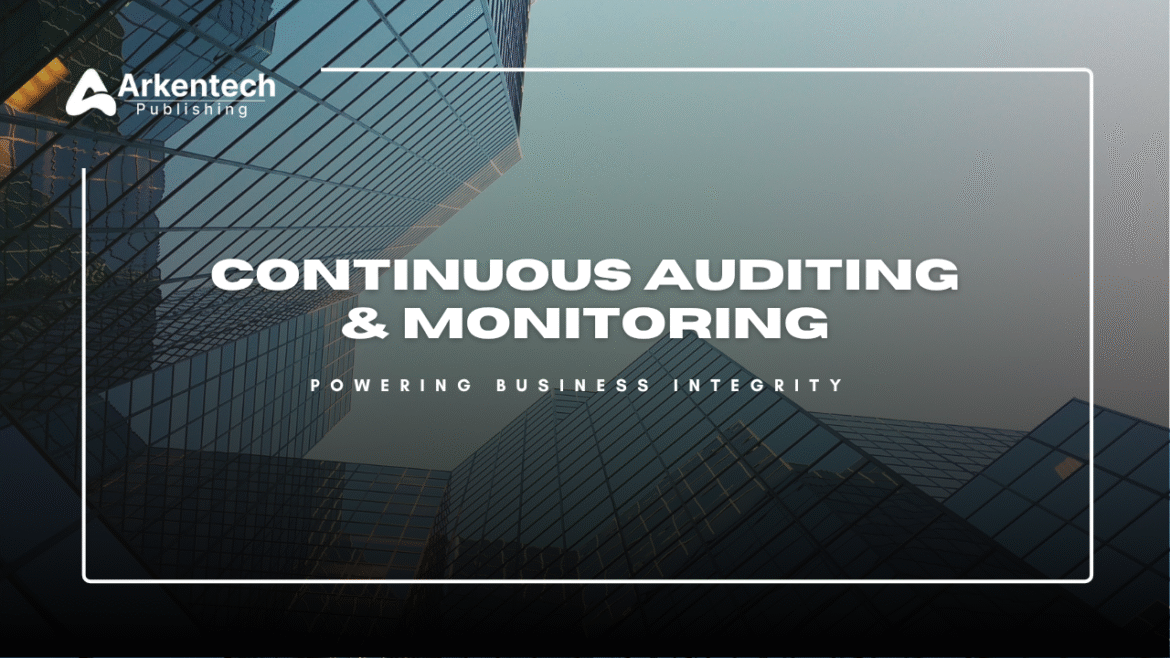Introduction
In a time of real -time data and rapidly developed rules, companies can no longer rely on auditing to ensure integrity and compliance. Continuous auditing and monitoring have emerged as the outline required to keep financial, operation and IT systems in chess -24/7.
This is a Continuous auditing and surveillance organizations continuously to detect deviations from blogs, reduce the risk and to streamline operations, especially to streamline operations in the digital scenario with a fast 2025 Rapid Book in 2025.
What is Continuous Auditing?
Continuous auditing refers to automatic, ongoing evaluation of financial transactions, compliance control and business processes using advanced technology. Contrary to the traditional audit or annual revision, continuous audit provides real -time monitoring by entering audit checks in day -to -day operations.
This includes:
- Automated data recovery and verification
- Rule -based trial in real time
- Instant warning for exceptions or irregularities
This process allows auditors and compliance groups to work quickly with problems, which reduces the time between risk and detection time
What is Continuous Monitoring?
Continuous monitoring is a broader concept that includes tracking systems, operations and only control for audit purposes, but also for safety, performance and compliance.Audit focuses on evaluating control and accuracy, and monitoring live performance focuses on observation and reaction of calculations and changes. Cases of general use include:
- IT System Health Monitoring
- Network Traffic Analysis
- Financial control monitoring
- User activity and scams ascertain
Together you create a strong management structure for companies – these two practices – perfect audit and monitoring
Benefits of Continuous Auditing & Monitoring
- Fast digit detection: fraud or real -time failure.
- Better risk control: Work with dangers before growing.
- Better compliance: Remain alliance with rules.
- Efficiency increase: Reduce manual check and save time.
- FLAR decision: Use live data for notified options.
Tools and Technologies Enabling Continuous Auditing
The emergence of advanced technologies has made continuous revision more accessible than ever. Large enablers include:
- AI and machine learning: Analyze Large versions of data and detect patterns or deviations beyond human ability.
- Robot process automation (RPA): Automatic audit functions, data extraction and rule -verification.
- Data analysis platform: Equipment such as real -time dashboards and power BI and Tableau for reporting.
- ERP integration: Continuous audit systems can be integrated with ERP platforms such as SAP, Oracle and Microsoft Dynamics.
Challenges to Consider
Despite the benefits, continuous revision and use of monitoring comes with their own set of challenges:
- Data quality and integration: Poor data inputs can produce incorrect results.
- System complexity: Integrating many devices and platforms can require IT expertise.
- Change management: Teams must fit the culture of truth and openness.
- Privacy Interest: Monitoring user activities cannot handle legal and moral problems properly.
A clear management strategy, right technology partners and staff training are required to meet these challenges.
Best Practices for Implementation
- Set clear goals: First focus on greater risk or compliance areas.
- Start Little: Use monitoring in steps.
- Use smart notifications: Make rule -based triggers for quick action.
- Regular reviews: Audit your monitoring setup for accuracy.
- Promote openness: Inform the teams to create a trust and secure compliance.
The Future of Continuous Auditing & Monitoring in 2025
By 2025, continuous revision and monitoring will be necessary in industries. Cloud-based tools, blockchain audits and prepaid analyzes will provide quick compliance. In addition to finance, fields such as health care and retail will use these systems to promote efficiency and to be ahead of the risk.
Real-World Use Case: Financial Institutions
Banks use continuous auditing to monitor millions of daily transactions. AI-operated equipment detects fraud, ensures AML joints and send real-time notifications. This helps financial companies to complete the rules quickly while protecting customers and assets.
Conclusion
As the need for openness, responsibility and agility increases, constant revision and monitoring provide real -time ridge ridge that requires modern businesses. They help companies remain obedient, avoid risk and unlock insights after data. By 2025, organizations that embrace this active model will not only be ahead of the dangers, but will create long -term faith with stakeholders and regulators.

